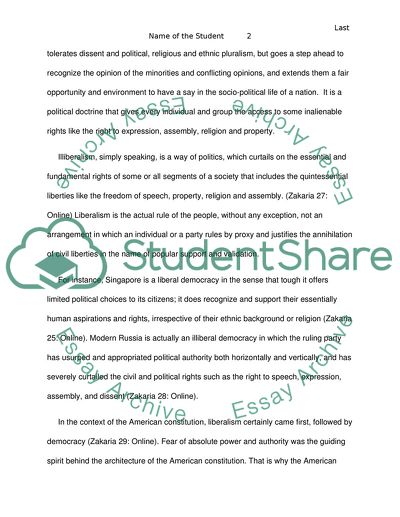Cite this document
(Fareed Zakaria - The Rise of Illiberal Democracy Research Paper - 1, n.d.)
Fareed Zakaria - The Rise of Illiberal Democracy Research Paper - 1. Retrieved from https://studentshare.org/politics/1749331-fareed-zakaria-article-the-rise-of-the-illiberal-democracy-civil-rights-and-women-suffrage-movements
Fareed Zakaria - The Rise of Illiberal Democracy Research Paper - 1. Retrieved from https://studentshare.org/politics/1749331-fareed-zakaria-article-the-rise-of-the-illiberal-democracy-civil-rights-and-women-suffrage-movements
(Fareed Zakaria - The Rise of Illiberal Democracy Research Paper - 1)
Fareed Zakaria - The Rise of Illiberal Democracy Research Paper - 1. https://studentshare.org/politics/1749331-fareed-zakaria-article-the-rise-of-the-illiberal-democracy-civil-rights-and-women-suffrage-movements.
Fareed Zakaria - The Rise of Illiberal Democracy Research Paper - 1. https://studentshare.org/politics/1749331-fareed-zakaria-article-the-rise-of-the-illiberal-democracy-civil-rights-and-women-suffrage-movements.
“Fareed Zakaria - The Rise of Illiberal Democracy Research Paper - 1”, n.d. https://studentshare.org/politics/1749331-fareed-zakaria-article-the-rise-of-the-illiberal-democracy-civil-rights-and-women-suffrage-movements.


